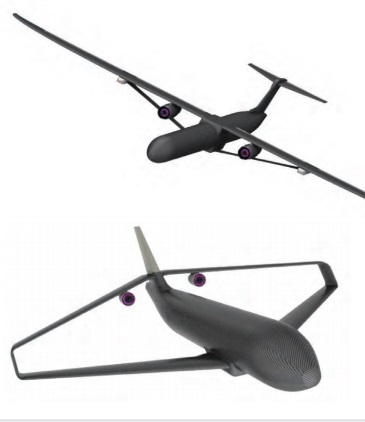Chapter: Engineering Successes, new invention technology, Research project papers,
PTERA System Identification Flight Tests

PTERA System Identification
Flight Tests
A technology gap
exists between well-controlled wind tunnel tests that only examine aerodynamics
and full-scale flight testing where most systems integration issues surface.
The Prototype Technology Evaluation Research Aircraft (PTERA) is a highly
reconfigurable unmanned flight research testbed
that bridges the gap
between wind tunnel and manned flight testing with low-cost, low-risk,
flight-based evaluation of high-risk technologies. PTERA allows for evaluation
of numerous advanced aerodynamic configurations, research control laws,
circulation control systems. Non-structural and replaceable leading/trailing
edge flaps permit flight evaluation of various research high lift and drag
reduction technologies. Any UAV autopilot and flight control computer can be
integrated into the platform.
All PTERA data and
models are open source and available to the entire flight research community.
There are no publication restrictions on flight test results and no aircraft
proprietary data.
Work to date: PTERA flew for the first time in July 2012,
and the focus was on system testing, pilot familiarization, and
initial performance measurements. In 2013, PTERA flew an additional six
flights. Primary focus was on system identification to develop aero models and
to evaluate stall characteristics. Tao sensors were also flown on these flights
as part of a NASA Aeronautics Research Mission Directorate Seedling Fund
research effort.
Looking ahead: A PTERA aircraft will
arrive at Armstrong in fall 2014. Several flight research
experiments have already been identified.
Partner: Area-I, Inc.,
developed the PTERA testbed under the NASA SBIR program. Other
partners include the State of
Georgia, Georgia Tech
Research Institute, Middle Georgia State College, Solid Concepts, and Aeroprobe
Corporation.
Engineering Successes
Armstrong's Research and Engineering Directorate is responsible
for the overall engineering content of flight research projects. Our engineers
provide technical expertise in aerodynamics; guidance, navigation, and control;
propulsion; static and dynamic structures; flight hardware and software; flight
and ground test instrumentation and data systems; and system engineering and
integration. They apply their expertise across the spectrum of Armstrong's many
activities and also support the development and continual evolution of
engineering tools and test techniques. Here are highlights from a few recent
and particularly notable engineering success stories.
Related Topics